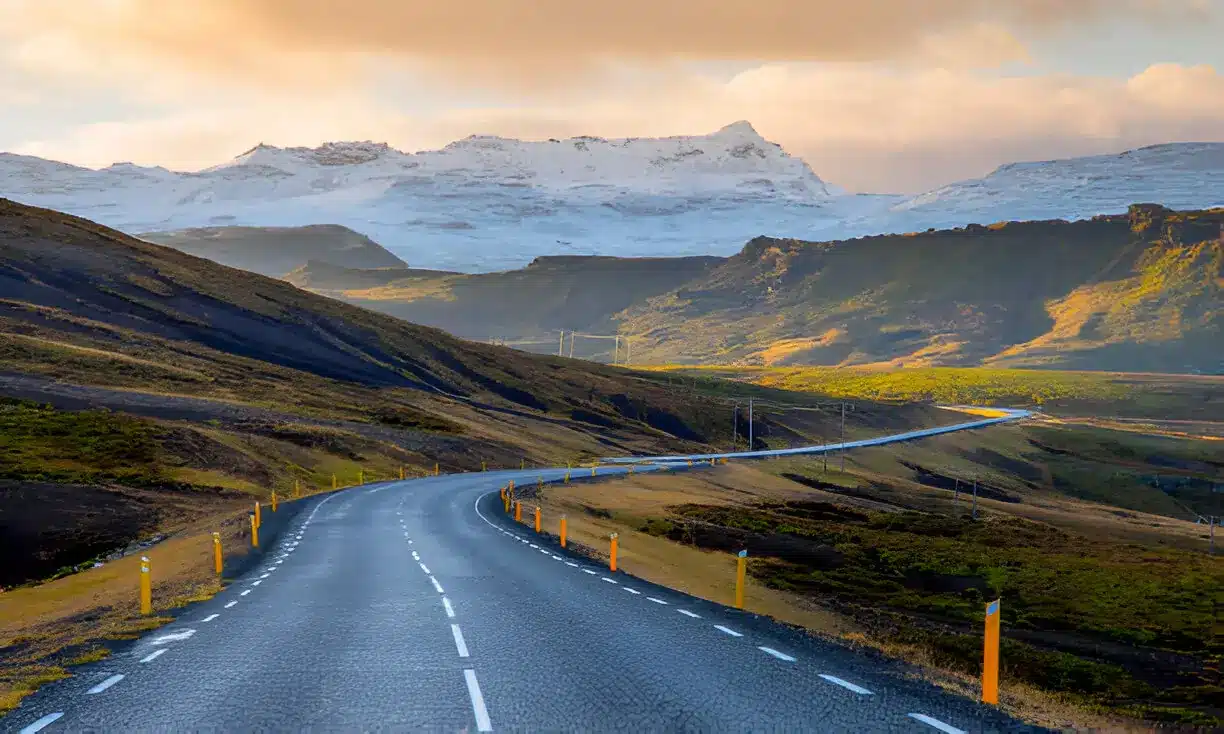Introduction
Embarking on a road trip across Iceland is an invitation to experience a world like no other, where dramatic contrasts are alive in every direction—towering waterfalls plunge over ancient cliffs, glacier-capped volcanoes stand sentinel above the plains, and windswept black sand beaches stretch into eternity. From the first mile, travelers are drawn into a landscape both untamed and inviting, promising adventure around every bend. To witness this island’s raw beauty up close, careful preparation is crucial. One of the most important decisions starts even before arrival: choosing a reliable, comfortable vehicle through Rent.is ensures that you’re equipped to tackle everything from sleek highways to rough gravel tracks. This foundational choice offers peace of mind and the ultimate freedom to roam wherever curiosity leads, making the road trip not just a means of travel but an integral part of the Icelandic experience.
Once on the road, travelers quickly learn that success in Iceland goes beyond spontaneity—a rewarding journey demands a vigilant approach. Shifting weather patterns, changes in daylight hours, and the sheer variety of spectacular natural sites mean flexibility and awareness are vital. Staying informed about conditions, plotting routes strategically, respecting the land, and embracing sustainable practices all come together to shape an adventure that is both exhilarating and respectful, allowing you to be fully present for every awe-inspiring moment.
Selecting the Appropriate Vehicle
The foundation of any rewarding Icelandic road trip lies in the choice of vehicle. Your rental car is more than just a way to get around—it’s your companion across vast lava fields, rugged highlands, and along the renowned Ring Road (Route 1) that circles the island. For those sticking primarily to this main thoroughfare, a standard two-wheel-drive or compact car offers comfort and convenience, smoothly connecting you with many of the country’s landmark destinations. However, if your curiosity takes you off the beaten path—to the mystical Highlands, remote fjords, or Iceland’s legendary F-roads—a robust four-wheel-drive (4×4) becomes essential. F-roads are restricted-access gravel tracks that crisscross the wilderness, often traversable only in summer due to challenging snow and terrain. Not only do these roads require specialized vehicles, but they also demand driving experience and additional insurance coverage, given the risks of river crossings, sharp rocks, and steep inclines.
Leading rental agencies offer a diverse fleet tailored to Iceland’s unique driving conditions, ensuring you have the right tools for any route you plan to take. Before finalizing your booking, openly discuss your intended itinerary with your provider—they can help verify whether your chosen car and insurance policy cover all the routes you want to explore. It’s crucial never to attempt Iceland’s F-roads or challenging terrains in an unsuitable vehicle; not only can this jeopardize your safety, but it can also void your insurance and lead to hefty repair bills. Ultimately, selecting the right vehicle may open up secluded corners of Iceland that you wouldn’t otherwise reach, crafting a once-in-a-lifetime road trip.
Monitoring Weather and Road Conditions
Iceland’s weather is nothing short of legendary in its unpredictability and intensity. Bright blue skies can vanish beneath a blanket of dense fog or give way to howling winds and snow flurries within a single afternoon, even during the height of summer. For drivers, these rapid changes mean vigilance is non-negotiable. Consulting reliable resources like the SafeTravel website keeps you updated with the latest real-time road closures, safety alerts, and sudden weather developments across the island. For more detailed meteorological forecasts, turn to the authoritative Icelandic Meteorological Office, which helps travelers anticipate anything from minor winds to major storms before they hit.
Checking these sites each morning before you set out—and periodically throughout the day if you plan a long drive—can spare you from getting stranded in hazardous conditions. Be prepared for last-minute changes, especially if your itinerary includes remote highland routes or coastal regions vulnerable to abrupt storms. Wind, in particular, is a force to be reckoned with on Iceland’s open plains and fjords, occasionally growing strong enough to impact vehicle stability or rip doors right off the hinges. Always park with your car facing into the wind, and be mindful when opening doors. By building flexibility into your plans, you’ll enjoy both safety and serenity, whatever the weather brings.
Planning Your Route and Accommodations
One of Iceland’s greatest gifts to travelers is the freedom to explore at your own pace, following roads that seem to unfurl into the wild unknown. While there is much to be said for spontaneous detours and the thrill of discovery, having a thoughtful plan ensures you don’t miss the island’s iconic highlights. The famed Ring Road serves as a well-marked guide, leading travelers past thundering waterfalls like Seljalandsfoss and Skógafoss, the sweeping ice cap of Vatnajökull glacier, geothermal marvels, and dramatic black sand beaches. Yet, some of the country’s richest rewards lie in quieter corners—the Snaefellsnes Peninsula’s mystical coastline, the jagged Westfjords where seabirds and seals abound, or the remote Eastfjords, populated by tiny fishing villages and secluded coves.
With Iceland’s growing popularity, wise road trippers secure accommodations in advance, particularly during the busy summer when countless visitors arrive to experience midnight sun adventures. Choices range from inviting guesthouses and upscale boutique hotels to rustic cabins and well-equipped campsites. In less-visited regions, options may be limited, and rooms can be booked months ahead. As a rule of thumb, reserve at least your first and last nights before landing, and consider pre-booking select stays along your route, especially if your itinerary takes you through remote or highly sought-after towns. Early planning takes the pressure off finding a place to rest, letting you focus on the magic of the road.
Understanding Local Driving Laws
Respecting Iceland’s strict driving regulations isn’t just a matter of law—it’s vital to safeguarding the country’s delicate ecosystems and unique landscapes. Off-road driving is strictly prohibited due to the irreparable damage it causes to moss fields, lava formations, and fragile soils that have taken centuries to form. Instead, drivers must stick to clearly marked roads, which are designed to minimize environmental impact. Icelandic authorities also enforce speed limits rigorously, with heavy fines for offenders: paved roads usually top out at 90 km/h (56 mph), while gravel stretches drop to 80 km/h (50 mph). Drive slower if weather conditions demand—ice, snow, or sudden rainfall can turn roads treacherous in moments.
All vehicle occupants are required by law to wear seatbelts, regardless of where they’re seated. Mobile phone use is only permitted with a hands-free device, so stay focused on the route ahead. Take extra care at single-lane bridges and blind summits—yield to oncoming traffic when necessary, and drive cautiously in the presence of livestock or unexpected wildlife. For a comprehensive overview of local requirements and tips, refer to well-researched resources such as this detailed guide. Observing these rules not only helps preserve Iceland’s unspoiled beauty but also ensures a safe, stress-free adventure for you and your fellow travelers.
Embracing Sustainable Travel Practices
With the boom in tourism, traveling responsibly across Iceland is more important than ever. Thoughtful choices made by road trippers today have a tremendous impact on the sights, communities, and ecosystems that make Iceland so special. When selecting a rental vehicle, consider eco-friendly or low-emission models through providers. Throughout your journey, adhere to “Leave No Trace” principles: pack out everything you bring in, dispose of rubbish responsibly, and always stick to built paths to avoid trampling delicate flora or disturbing nesting birds.
Supporting local communities is an important aspect of sustainable travel. Shop at family-run stores, dine in village cafés, and book stays at rural guesthouses, many of which now offer eco-certifications and environmentally sensitive amenities. These choices ensure your travel dollars benefit the people and places you visit, rather than large international chains. For those who want to deepen their commitment, consult resources like this eco-friendly road trip guide for practical tips. By minimizing your carbon footprint and traveling responsibly, you’ll help keep Iceland’s magical wilderness wild for generations of explorers to come.
Conclusion
A road trip through Iceland is both a personal odyssey and a shared stewardship of a land like no other—a place where ancient glaciers, tumbling waterfalls, and vibrant cultural traditions come together in a breathtaking tapestry. By preparing carefully—choosing the ideal vehicle, staying updated on fluctuating weather and road conditions, mapping out routes and rest stops, respecting local laws, and championing sustainable practices—you’ll transform a scenic drive into a life-affirming adventure. With each thoughtful decision, you help preserve Iceland’s rare and wondrous beauty so that it may continue to inspire travelers for years to come.
Read more: Best Browser Shortcuts and Tips for Increased Productivity
Don’t Let These DIY Disasters Ruin Your Summer
Built to Last: How to Maximize the Lifespan of Industrial Robotic Arms










